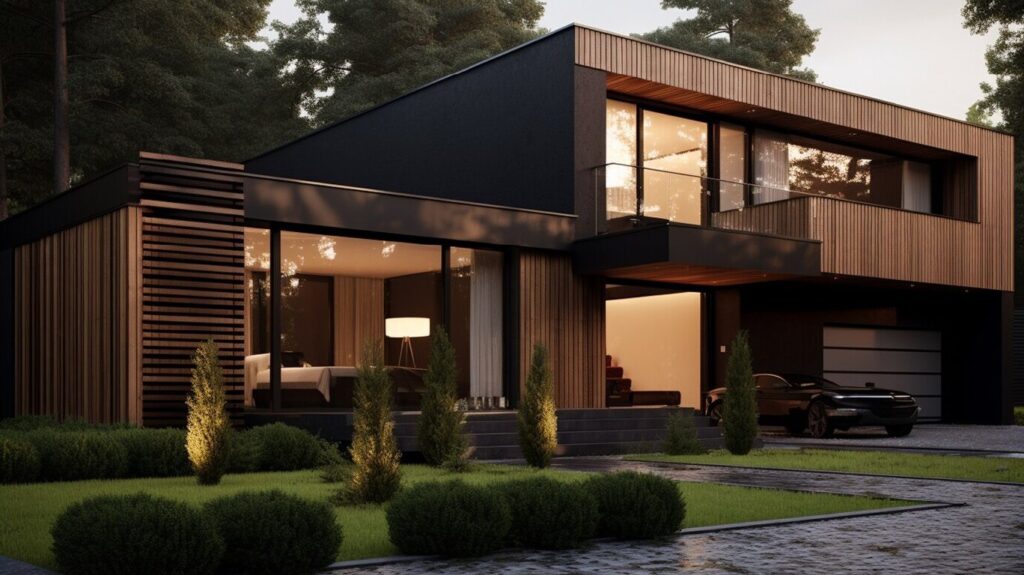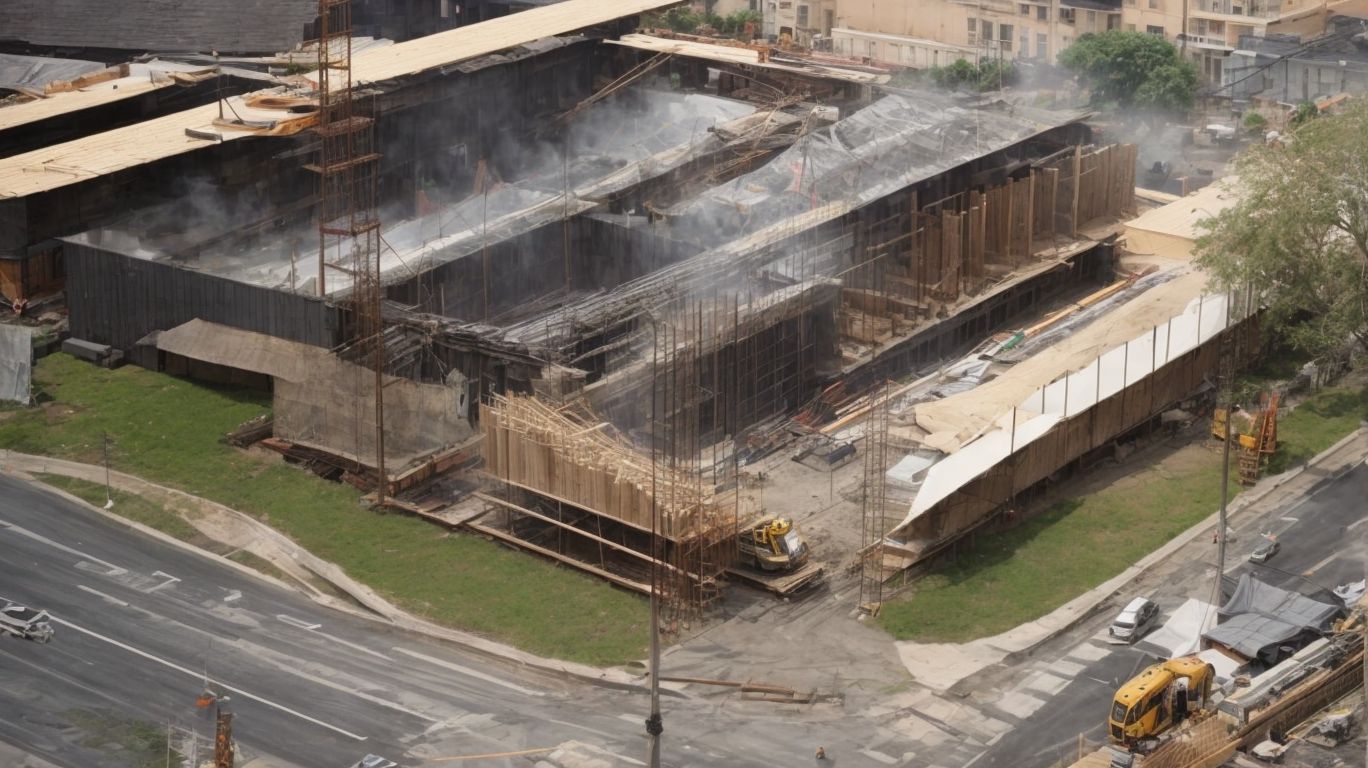
Myths and Misconceptions About Retrofitting
Retrofitting is a crucial process that involves making modifications to existing buildings to improve their structural integrity and energy efficiency.
There are several common myths and misconceptions surrounding retrofitting that often lead to misunderstandings about its importance and benefits. In this article, we will debunk these misconceptions and explore the true benefits of retrofitting. We will discuss the different types of retrofitting and how they are carried out to provide a comprehensive understanding of this important building practice. So, let’s clear up the confusion and uncover the truth about retrofitting!
What Is Retrofitting?
Retrofitting, in the context of building construction and renovation, refers to the process of upgrading and enhancing the structural and energy efficiency aspects of a building.
This includes the improvement of building systems, such as HVAC, plumbing, and electrical systems, to meet current standards and regulations.
Retrofitting also encompasses the incorporation of eco-friendly and sustainable practices to reduce energy consumption and minimize environmental impact. It involves exploring various upgrade options and construction methods, such as installing insulation, replacing windows, or implementing renewable energy systems, to modernize and optimize the performance of existing structures.
The significance of retrofitting lies in its ability to extend the lifespan of buildings, enhance occupant comfort, and contribute to overall energy conservation.
What Are The Common Misconceptions About Retrofitting?
Despite its importance, retrofitting is often shrouded in myths and misconceptions within the building and construction industry.
There is a common belief that retrofitting is only necessary for older buildings, but this neglects the fact that even newer structures may require updates to enhance their resilience.
Another misconception is that retrofitting is purely for aesthetic purposes, when in reality, it plays a crucial role in building maintenance and safety. It is important to address these misunderstandings in order to promote a comprehensive understanding of the challenges and benefits associated with retrofitting, ultimately leading to more resilient and secure buildings.
Retrofitting Is Only For Old Buildings
One prevalent misconception about retrofitting is that it is exclusively meant for old buildings, disregarding the potential for structural enhancement and the utilization of modern building materials.
Retrofitting is not limited to old buildings; it can be applied to various structures, including commercial complexes, industrial facilities, and residential properties.
By integrating modern building materials and advanced construction techniques, retrofitting can significantly improve the structural integrity, energy efficiency, and sustainability of these buildings. It offers opportunities for upgrading infrastructure to meet current safety standards and environmental regulations, making it a versatile and impactful solution for enhancing the performance and longevity of diverse building types.
Retrofitting Is Expensive
Another common misconception is the belief that retrofitting is prohibitively expensive, often overlooking the long-term cost savings and the potential for retrofit affordability.
It’s important to recognize that while initial retrofit costs may seem significant, the long-term benefits often far outweigh the upfront investment.
With advancements in technology and an increased focus on sustainability, there are now many cost-effective solutions available for retrofitting, making it more affordable than commonly perceived.
Retrofitting can lead to substantial energy savings, lower maintenance expenses, and improved efficiency, all of which contribute to its overall affordability in the long run.
Retrofitting Is A One-time Fix
Myth: It’s a common myth that retrofitting serves as a one-time fix, neglecting the need for comprehensive retrofit planning and ongoing retrofit implementation strategies.
Reality: Many people mistakenly believe that once a building undergoes retrofitting, it is set for the long term. The reality is that retrofit planning and implementation should be ongoing processes to keep up with evolving technologies, regulations, and building performance standards.
Without continuous attention to retrofit strategies, buildings can quickly fall behind in energy efficiency, safety features, and overall functionality. Therefore, it is crucial to prioritize ongoing retrofit planning and implementation to ensure that buildings remain efficient, safe, and sustainable.
Retrofitting Is Only For Earthquakes
There is a misconception that retrofitting is solely focused on addressing earthquake vulnerabilities, disregarding its broader applications, including seismic upgrade solutions for various hazards.
In reality, retrofitting encompasses a wide range of hazards, such as hurricanes, tornadoes, floods, and even fire protection. Retrofit solutions go beyond seismic upgrades to enhance structural integrity and resilience against multiple threats.
For example, reinforcing building facades and roofs, installing impact-resistant windows, and strengthening foundations are all part of retrofitting measures that can mitigate the impact of different hazards. By debunking the myth that retrofitting is only relevant for earthquakes, we can emphasize its versatility in safeguarding structures against various potential dangers.
Retrofitting Is Not Necessary For Small Buildings
Another prevalent misconception is the belief that retrofitting is unnecessary for small buildings, overlooking the potential benefits and building upgrades that can result from retrofitting interventions.
Many small building owners hold the misconception that their structures do not require retrofitting due to their size.
Retrofitting offers numerous benefits, such as improved energy efficiency, enhanced safety measures, and increased property value.
Building upgrades implemented through retrofitting can lead to substantial cost savings in the long run, as well as a reduced environmental impact.
It is essential for small building owners to recognize the potential value of retrofitting in optimizing their structures for long-term sustainability and functionality.
What Are The Benefits Of Retrofitting?
Retrofitting offers a myriad of benefits for buildings, encompassing improved structural integrity, enhanced energy efficiency, and sustainable construction practices.
Retrofitting plays a crucial role in green building initiatives. It helps reduce the environmental impact of structures by lowering their energy consumption and carbon footprint.
Energy conservation through retrofitting not only benefits the building’s performance, but also contributes to broader sustainability goals. By implementing retrofit measures, buildings can achieve significant energy savings, prolonging their lifecycle and aligning with sustainable development principles. Retrofitting stands as a transformative practice in advancing green building and promoting environmental stewardship within the built environment.
Improves Structural Integrity
One of the primary benefits of retrofitting is the substantial improvement in the structural integrity of buildings, particularly through seismic retrofit measures. This is crucial in ensuring that buildings remain resilient and safe during seismic events. It aligns with the stringent building codes and engineering standards.
Retrofitting not only addresses existing vulnerabilities, but also reinforces the overall stability. This reduces the risk of structural failure, providing peace of mind to occupants and enhancing the longevity of the building. It also minimizes potential damages and preserves valuable structures for future generations.
Increases Property Value
Retrofitting contributes to a notable increase in the property value of buildings, especially when integrated with energy-efficient solutions and green building practices.
Efficiency upgrades offer multiple benefits, including reduced energy consumption and lower utility costs. They also increase the appeal of a property to potential buyers or tenants.
One effective way to make a building more environmentally friendly and cost-effective is by incorporating sustainable construction elements. These can include improved insulation, high-efficiency HVAC systems, and renewable energy sources.
By implementing these upgrades, property owners can attract a wider market and potentially command higher resale or rental values for their buildings.
Reduces Risk Of Damage During Natural Disasters
By implementing retrofit measures, buildings experience a significant reduction in the risk of damage during natural disasters, underscoring the importance of retrofit strategies for building resilience.
Retrofit strategies involve assessing the structural integrity of buildings and identifying vulnerable areas that require reinforcement. This includes incorporating earthquake-resistant materials, strengthening foundations, and securing roofs to mitigate the impact of seismic activity and high winds.
Retrofit planning also encompasses the installation of flexible utility connections and the use of impact-resistant windows to enhance a building’s ability to withstand disasters. By proactively implementing these measures, communities can bolster their resilience to natural hazards and minimize the potential destruction caused by such events.
Saves Money On Insurance Premiums
An often overlooked benefit of retrofitting is the potential for saving money on insurance premiums, serving as a cost-effective incentive for investing in retrofit solutions.
This financial incentive can be particularly enticing for businesses and property owners looking to reduce operating expenses. By investing in retrofit solutions to mitigate potential risks, there is an opportunity to demonstrate to insurance providers a proactive approach to hazard prevention, which can result in lower premiums.
The initial investment in retrofit costs can lead to long-term savings, with a positive retrofit ROI that far outweighs the upfront expenses. This presents an attractive proposition for those seeking both immediate and future financial benefits.
Increases Energy Efficiency
Retrofitting plays a pivotal role in increasing the energy efficiency of buildings, aligning with sustainability goals and facilitating considerable energy savings over time.
Retrofitting buildings with energy-efficient systems is a key strategy for reducing energy consumption. This can include installing LED lighting, smart HVAC controls, and improved insulation. In addition, obtaining energy-efficient certifications like LEED or ENERGY STAR can demonstrate a commitment to sustainability and attract environmentally conscious tenants.
Fortunately, there are various resources available to support building owners and operators in implementing energy-saving retrofits. These include government incentives and energy audit programs. By taking advantage of these resources, buildings can become more energy-efficient and contribute to a greener future.
How Is Retrofitting Done?
The process of retrofitting encompasses various methodologies tailored to address specific building systems, encompassing seismic upgrade, energy retrofit, and structural enhancement through advanced construction technologies.
Seismic retrofit solutions focus on reinforcing structures to withstand seismic events. This encompasses methods such as base isolation and dampers.
Energy retrofit, on the other hand, targets energy efficiency by integrating green technology to reduce consumption. The integration of advanced construction technologies, such as Building Information Modeling (BIM) and prefabrication, streamlines the retrofit process, improving efficiency and precision.
Seismic Retrofitting
Seismic retrofitting involves the implementation of structural enhancements to bolster buildings against the impact of earthquakes and similar seismic events. This process holds immense significance in ensuring the safety and resilience of existing structures.
By adhering to retrofit certification standards and building recommendations, retrofitting projects can address vulnerabilities and enhance the capacity of buildings to withstand seismic forces. It plays a crucial role in safeguarding lives and minimizing the potential damage caused by seismic activities.
Seismic retrofitting contributes to the overall resilience of communities and infrastructure, making them better prepared to handle unforeseen seismic events.
Energy Retrofitting
Energy retrofitting focuses on optimizing building energy efficiency through the strategic application of insulation, technology upgrades, and energy-efficient solutions tailored to specific building performance needs.
Energy retrofitting aims to enhance the overall energy performance of existing structures, ultimately reducing energy consumption and minimizing carbon footprints. By adhering to energy-efficient guidelines, retrofit innovation can introduce modern, green technologies that promote sustainable practices.
Incorporating energy conservation principles into retrofitting practices has become increasingly important, with a focus on minimizing environmental impact and maximizing long-term energy savings. The integration of green technology in energy retrofitting is crucial for ensuring a more sustainable and environmentally friendly built environment, aligning with global efforts to address climate change and resource efficiency.
Structural Retrofitting
Structural retrofitting focuses on enhancing the load-bearing capacity and durability of buildings through the utilization of advanced building materials and innovative retrofit solutions. This approach involves the careful assessment of the existing building structure, identifying potential weaknesses and areas in need of reinforcement.
Retrofit recommendations often emphasize the importance of complying with building standards and codes to ensure long-term structural integrity. By integrating these recommendations into retrofit projects, buildings can be brought up to current safety standards, meeting the demands of modern usage and safeguarding against potential hazards.
The selection of suitable building materials plays a crucial role, with a focus on compatibility, strength, and sustainability to achieve optimal retrofit outcomes.
Non-structural Retrofitting
Non-structural retrofitting involves measures aimed at fortifying building components beyond the primary load-bearing elements, focusing on building maintenance and the implementation of retrofit best practices for optimal building performance.
Retrofitting plays a crucial role in enhancing a building’s resilience and longevity. It addresses potential vulnerabilities that may arise from environmental or usage factors.
Retrofit professionals are responsible for assessing existing conditions, identifying potential risks, and recommending appropriate retrofit strategies. Their role is essential in retrofit planning.
Effective retrofitting not only ensures the safety of occupants but also minimizes the need for costly repairs and disruptions in the future. It is a critical aspect of sustainable building management.




No Comments